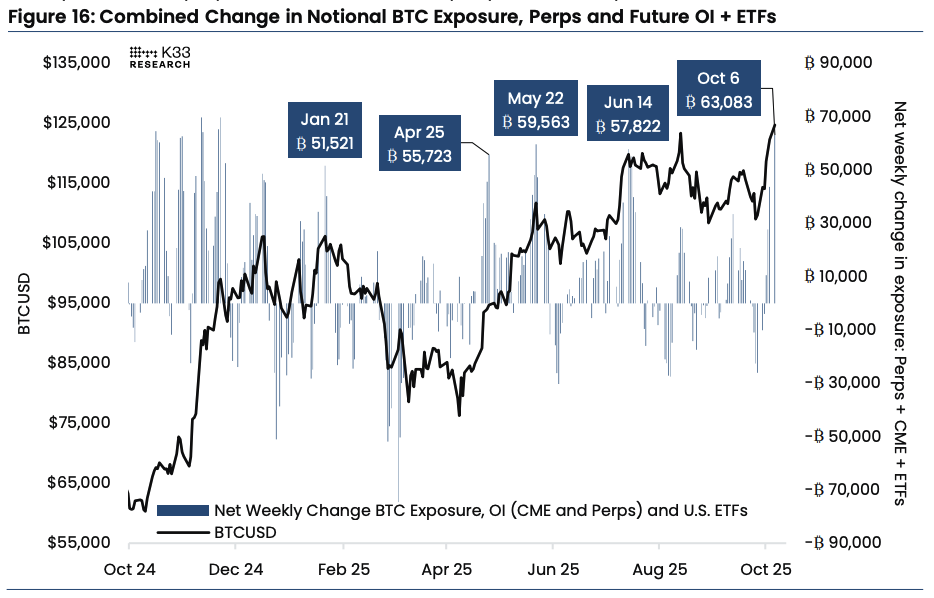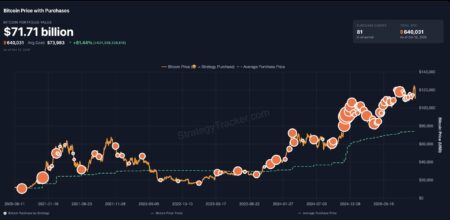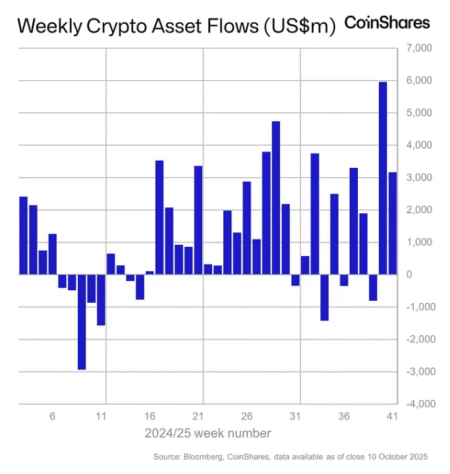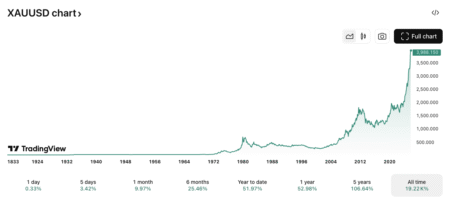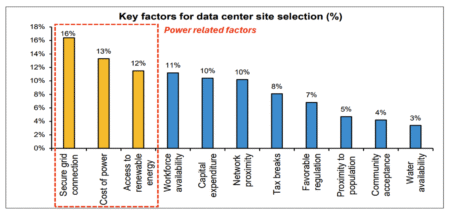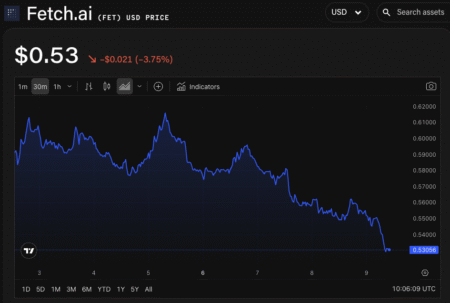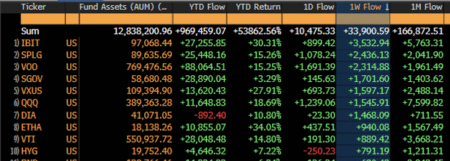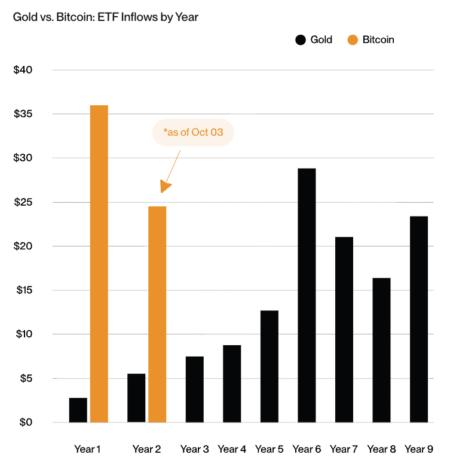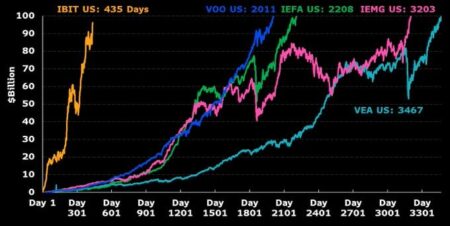Bitcoin’s New Era: A Shift from Historical Cycles to Institutional Adoption
In a significant shift within the cryptocurrency landscape, K33’s October outlook emphasizes that Bitcoin’s traditional four-year halving cycle may no longer hold relevance. With phrases like "the 4-year cycle is dead, long live the king," Head of Research Vetle Lunde suggests that Bitcoin has entered a new paradigm. This change is largely attributed to rising institutional adoption, sovereign involvement, and macroeconomic policy alignment. As Bitcoin experiences a buoyant rise to new all-time highs, especially in euro-denominated valuations, this analysis calls into question the established market patterns that have previously guided investor sentiment.
A detailed look at current market trends reveals a surge in Bitcoin ETFs and derivatives, amounting to over 63,000 BTC (approximately $7.75 billion) within just a week. Such spikes in accumulation are noteworthy, but they also suggest the market might be overheated. This has historically marked local peaks, indicating potential mean reversion plays. Despite this, Lunde remains optimistic, predicting only short-term consolidation rather than an impending structural reversal. The surge in Bitcoin’s popularity is undeniably tied to new financial instruments and institutional acceptance, redefining how investors view and interact with cryptocurrencies.
The contrasts drawn between past Bitcoin rallies and the current market sentiment underscore a significant evolution. For instance, the euphoric peaks of 2017 and 2021 were fueled by speculative excitement rather than solid foundations. In 2017, the launch of CME’s futures spurred unrealistic optimism. In 2021, anticipated ETF approvals ended in regulatory disappointment. However, in 2025, these initiatives have come to fruition. Major players like BlackRock now manage $100 billion in Bitcoin ETF assets, while financial institutions like Morgan Stanley are advising clients to allocate up to 4% of their portfolios to cryptocurrencies. This shift indicates that Bitcoin is increasingly recognized as a legitimate asset within institutional frameworks.
Further magnifying this paradigm shift is the anticipated shift in U.S. monetary policy. Citing potential changes in leadership, Lunde predicts that a more accommodating fiscal environment could emerge, promoting Bitcoin’s appeal as a scarce asset. The comparison to past monetary tightening during previous market peaks adds an important layer to understanding Bitcoin’s future trajectory. Instead of austerity, an environment conducive to abundance, particularly in the context of digital assets, sets the stage for continued bullish sentiment in Bitcoin markets.
While historical data can provide insights into market mechanics, Lunde dismisses relying solely on fractal analysis, suggesting that Bitcoin’s price movements could be more random than cyclical. K33 proposes a more nuanced approach through a six-part framework assessing various market risk factors. Indicators such as funding rates, Relative Strength Index (RSI), declining Bitcoin dominance, and social trends are examined. Currently, only two factors signal caution: dissonance between perpetual and spot trading and an overbought RSI, which reveals that Bitcoin has not reached the danger zones typical of previous market peaks.
In conclusion, K33’s research reflects a shift in cryptocurrency dynamics, moving beyond traditional four-year cycles and highlighting the ascent of institutional influence in the market. While short-term consolidation may be on the horizon, the broader narrative suggests a significantly different environment from past Bitcoin cycles. This new paradigm, characterized by increasing legitimacy and acceptance of Bitcoin as a viable asset class, positions it uniquely for potential growth in the coming years. As the financial landscape continues to evolve, understanding these shifts will be critical for investors and stakeholders navigating the world of cryptocurrencies.





